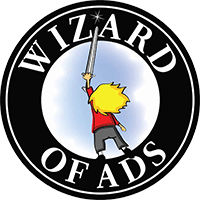full
Not Everything is Scalable
Ninety percent of motorcycle riders who attempt this corner at 100 mph crash and die, so 9% of riders who attempt it at 10 mph will also crash and die, right?
The fact that you answered silently ‘No’ indicates that you instinctively understand the concept of an inflection point.
Somewhere between zero and 100 mph is the inflection point where crashes begin to occur, and every mile-per-hour above that inflection point increases the likelihood of a crash.
Although we instinctively understand the reality of the inflection point when reducing from the greater to the smaller, we somehow believe things are infinitely scalable when moving from the smaller to the greater.
If we can navigate the corner at 77 mph, then we can do it at 78 mph. And if we can do it at 78 mph, we can certainly do it at 79 mph. And if 79 is doable, then so is 80, right?
I’m talking to you about lead generation for your business.
A few days ago, I was having a conversation that I find myself having far too often. I have an acquaintance in the air conditioning business who told me he was planning to increase his Google budget. He said,
“If I increase my Google budget by 50%, I’ll get 50% more leads.”
He’s been in business about 11 years and is a major player in his city, so I asked, “During peak season, how many calls do you get on the average day?”
He told me the number, then I said, “Now think of all your competitors and estimate the number of calls they could possibly be getting. Give it some thought. Don’t leave anyone out.”
I gave him time to think, then said, “Add that call volume to your call volume. Now tell me, what is the largest possible number of people that could possibly need air conditioning service during peak season?”
He gave me a number. I asked, “Is there any way it could be higher than that?”
“No.”
“Peak season has been over for awhile. How many clicks are you currently buying each day?” His eyes got big and he said,
“I’m already buying more than 3 times that many clicks every day! How is that possible?”
“Are you asking me how it is possible that a finite number of people in your city are in the market for your product today, but the number of clicks available today is infinite? Is that what you’re asking?”
He shook his head yes, so I told him the answer.
I run into the same problem when talking to clients about radio ads. They say,
“Every time I have increased my radio budget, my sales have increased. So I want to increase my budget again.”
“It won’t do you any good.”
“But it has always worked in the past.”
“It won’t work this time because you are already reaching all the people who spend enough time listening to the radio each week to make it possible for you to reach them with sufficient repetition. The only people left are the ones who don’t spend enough time listening. We’re going to have to add a new media: TV, or billboards, or maybe direct mail.”
“Will it work as well as the radio?”
“Of course not. Because we’re at an inflection point.”
“What do you mean?”
“You’re already reaching 39% of your city with enough repetition for those people to know who you are and what you do and how you do it and why they should choose you. So whatever media we buy next, you’ve got to keep in mind that we’re already reaching 39% of those people with relentless repetition on the radio. The best-case scenario is that you’re going to see about 60% as much business growth per ad dollar as you’ve seen in the past.”
No one wants to hear that.
People want to believe that everything related to business is infinitely scalable. But there is always an inflection point when lead generation becomes more expensive.
The happy times are when you reach that glorious inflection point when things really begin to take off. Like when you are far enough into a 52-week TV or radio campaign for the public to have heard enough about you to finally start choosing to buy from you.
Sadly, this TV/Radio inflection point is usually somewhere between week 13 and week 26. Not always, but usually. Most advertisers don’t stay with it that long, because most advertising salespeople don’t have the courage to tell them it’s going to take that long.
The exception, of course, is when you have an urgent message about a limited-time offer. Those ads usually start working much sooner.
Problem solved, right? Just run direct-response ads with an attractive offer and a strong call to action!
But inflection points in advertising are funny:
- Anything that works quickly, will work less and less well the longer you do it.
- Anything that works better and better the longer you do it, will always seem, at first, like it’s not working at all.
Roy H. Williams
Every day, 3,000 new people decide to get into the game of online selling. Ninety percent of them – 2,700 per day – will never make a single sale. Matthew Stafford knows what they are doing wrong and how to fix it. Matthew’s magical formula for won’t drive potential customers to a website, but it will definitely convince prospects who visit a site to click the “buy” button a lot more often. Listen as Maxwell Rotbart – rising star son of the roving reporter – convinces Stafford to explain how tweaking the backend can can help businesses convert twice as many front-end sales. The miracle will begin the moment you arrive at MondayMorningRadio.com.

